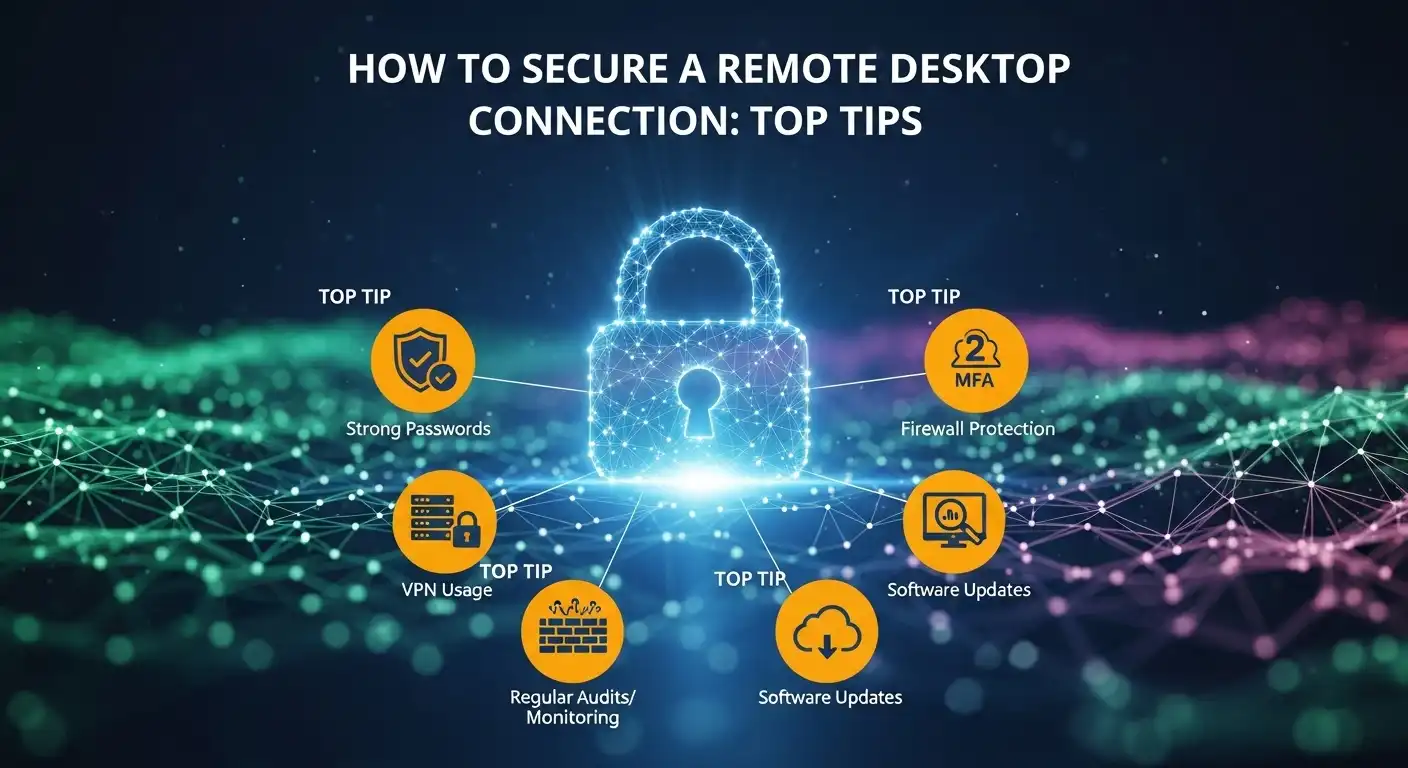In the era of hybrid and remote work, the ability to access your work computer from anywhere is no longer a luxury—it's a necessity. Microsoft's Remote Desktop Protocol (RDP) has become the go-to solution for millions, offering a seamless way to connect to a remote machine's desktop environment. However, this convenience comes with significant security risks. Unsecured RDP ports are one of the most common entry points for cybercriminals, leading to data breaches, ransomware attacks, and compromised networks. Understanding how to secure a remote desktop connection is not just a technical task for IT departments; it's a critical responsibility for anyone using this powerful tool. This comprehensive guide will walk you through the essential and advanced strategies to lock down your RDP sessions, ensuring your digital workspace remains safe from prying eyes. Foundational Security Measures: The Non-Negotiables Before diving into advanced configurations, it's crucial to establish a strong security baseline. Think of these as the locks on your digital doors and windows. Many of the most devastating cyberattacks targeting RDP could have been prevented by implementing these fundamental, non-negotiable steps. Attackers often rely on the "low-hanging fruit"—users who have overlooked the basics. By getting these right from the start, you immediately elevate your security posture from vulnerable to resilient. These foundational measures are primarily designed to combat the most prevalent threat against RDP: brute-force attacks. In a brute-force attack, an automated script attempts to log in by trying thousands or even millions of common username and password combinations. Since the default RDP port (3389) is universally known, scanners are constantly trawling the internet for open ports, ready to launch these attacks. Without basic protections, your server is a sitting duck, and it's a matter of when, not if, an attacker will try to break in. Building a secure RDP environment starts with a layered approach. No single solution is a silver bullet. Instead, combining multiple layers of defense creates a formidable barrier that is significantly harder for attackers to penetrate. The following steps form the bedrock of this layered strategy. They are relatively easy to implement and provide the most significant security return on your effort. Neglecting them is akin to leaving your front door unlocked and hoping for the best. Use Strong, Unique Passwords and Multi-Factor Authentication (MFA) The first line of defense for any login system is the password. However, human nature often leads to the use of weak, easily guessable passwords like "Password123" or "admin". A strong password is your primary shield against brute-force attacks. It should be long (at least 12-16 characters), and include a mix of uppercase letters, lowercase letters, numbers, and special symbols. Most importantly, the password you use for RDP access must be unique—it should not be reused for any other service. If a password from another service is leaked in a data breach, attackers will try it against your RDP login. While a strong password is essential, it's no longer enough on its own. Multi-Factor Authentication (MFA) is the modern standard for identity verification and a game-changer for RDP security. MFA requires a user to provide two or more verification factors to gain access, such as: Something you know: Your password. Something you have: A code from an authenticator app on your phone (like Google Authenticator or Microsoft Authenticator), a hardware token, or an SMS code. Something you are: A fingerprint or facial scan. By enabling MFA, you ensure that even if an attacker steals your password, they cannot log in without physical access to your second factor (e.g., your smartphone). This single step can thwart the vast majority of unauthorized access attempts. Change the Default RDP Port By default, the Remote Desktop Protocol listens for connections on port 3389. This is common knowledge among IT professionals and, unfortunately, cybercriminals. Automated hacking tools are specifically configured to scan the internet for devices with port 3389 open. When they find one, they immediately flag it as a potential RDP server and often initiate a brute-force attack. Leaving the default port open is like putting a giant sign on your network that says, "RDP server here, try to hack me!" Changing the default port to a non-standard number (e.g., something above 1024, like 33091) is a simple but effective tactic known as security through obscurity. While it won't stop a determined attacker who performs a full port scan on your IP address, it will make your server invisible to the vast majority of automated, opportunistic scans. This simple change significantly reduces your attack surface and the noise of constant brute-force attempts. It's a quick win that forces attackers to do more work to even find your RDP service, causing many to simply move on to an easier target. Network-Level Protection for Your RDP Securing the RDP service itself is critical, but protecting the network it resides on is equally important. Your goal should be to prevent unauthorized users from even having the opportunity to attempt a connection. Network-level protection acts as a gatekeeper, filtering out malicious traffic long before it reaches your server's login screen. This approach drastically reduces the strain on your server and minimizes the risk of vulnerabilities in the RDP protocol itself being exploited. Imagine your server as a secure vault inside a building. Endpoint security measures like strong passwords and MFA are the locks on the vault door. Network-level security, on the other hand, is the locked front door of the building, the security guard at the entrance, and the perimeter fence. Only pre-approved individuals are even allowed to enter the building to get near the vault. This layered defense is a cornerstone of modern cybersecurity. By implementing firewall rules and leveraging encrypted tunnels like VPNs, you can hide your RDP service from the public internet. This makes it impossible for automated scanners and opportunistic hackers to find and attack it. Instead of exposing your RDP port directly to the world, you create a private, controlled pathway that only trusted users can access, substantially enhancing your overall security posture.





